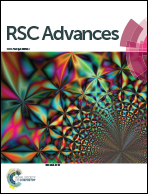Effects of surface hydrophilic properties of PEG-based mucus-penetrating nanostructured lipid carriers on oral drug delivery
Abstract
Nano-structured lipid carriers (NLCs) have been widely used for oral drug delivery due to their remarkable biocompatibility and biodegradability. In addition to formulation and particle size, particle surface properties are important for overcoming gastrointestinal (GI) barriers to oral drug delivery by lipid-based nanoparticles. In this study, we describe polyethylene glycol (PEG)-based mucus-penetrating NLCs and we report the effect of surface hydrophilic properties on their oral delivery across the GI mucus and intestinal epithelium cells in vivo and in vitro. The solvent evaporation method was used to prepare PEG-modified NLCs (pNLCs) with three different levels of polyethylene glycol (100) monostearate (S100) as the hydrophilic coating material. The stability and cytotoxicity of pNLCs, as well as their uptake by Caco-2 cells and transport across Caco-2 monolayers and mucus-secreting Caco-2/HT29 coculture monolayers, were investigated to confirm the optimal PEG level for oral delivery. In situ single-pass perfusion experiments, in vivo imaging and in vivo oral pharmacokinetic studies were also performed in rodents to evaluate the oral absorption of pNLCs with different hydrophilic surface properties. Our results showed that the hydration layer thickness of the pNLCs increased with the increasing S100 content. NLC containing 20% S100 (pNLC-20%) showed the highest uptake by Caco-2 cells and the most effective permeation through Caco-2/HT29 coculture monolayers compared with unmodified NLC, pNLC-40% and pNLC-80%. In addition, pNLC-20% was the most stable during the process of oral administration and uptake into the blood circulation, as judged by fluorescence resonance energy transfer (FRET). Moreover, in situ single-pass perfusion experiments, ligated intestinal loops tests, in vivo imaging and pharmacokinetics studies also demonstrated that pNLC-20% most rapidly penetrated the intestinal epithelium and had the highest AUC and Cmax of all the NLCs. In conclusion, optimization of surface hydrophilic properties is essential for enhancing the absorption of drugs delivered by oral administration of lipid-based nanocarriers.


 Please wait while we load your content...
Please wait while we load your content...